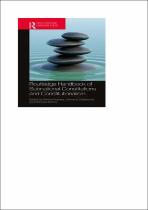| dc.contributor.author | Fessha, Yonatan | |
| dc.date.accessioned | 2022-04-28T08:17:26Z | |
| dc.date.available | 2022-04-28T08:17:26Z | |
| dc.date.issued | 2021 | |
| dc.identifier.citation | Fessha, Yonatan ‘Subnational constitutionalism in Ethiopia: Constitutional déjà vu’ in Patricia Popelier, et al, eds. The Routledge handbook of subnational constitutions and constitutionalism (Routledge, 2021) pp. 129– 144 | en_US |
| dc.identifier.isbn | 9781003052111 | |
| dc.identifier.uri | http://hdl.handle.net/10566/7330 | |
| dc.description.abstract | This chapter provides a concise account of the nature, scope and relevance of state constitutions in Ethiopia. The major armed forces that challenged state policy were the Eritrean liberation fronts that launched armed struggle when Emperor Haile Selassie dissolved the United Nations-sponsored federation with Eritrea and incorporated the latter as one of its other deconcentrated provinces. The outcome is a federation that is composed of nine states that are by and large demarcated along ethnic lines. The federal constitution allows each state to adopt and execute its own constitution. The federal constitution, according to article 9 of the Constitution, is the supreme law of the land. Any law, including a law enacted by state governments, that is incompatible with the federal constitution is rendered ineffective. The ample constitutional space that the states inhabit promises an environment in which the state constitutions are dynamic and relevant. | en_US |
| dc.language.iso | en | en_US |
| dc.publisher | Routledge | en_US |
| dc.subject | Constitutionalism | en_US |
| dc.subject | Ethiopia | en_US |
| dc.subject | Eritrean liberation | en_US |
| dc.subject | Ethnicity | en_US |
| dc.subject | Federal constitution | en_US |
| dc.title | Subnational constitutionalism in Ethiopia : Constitutional déjà vu | en_US |
| dc.type | Book chapter | en_US |

